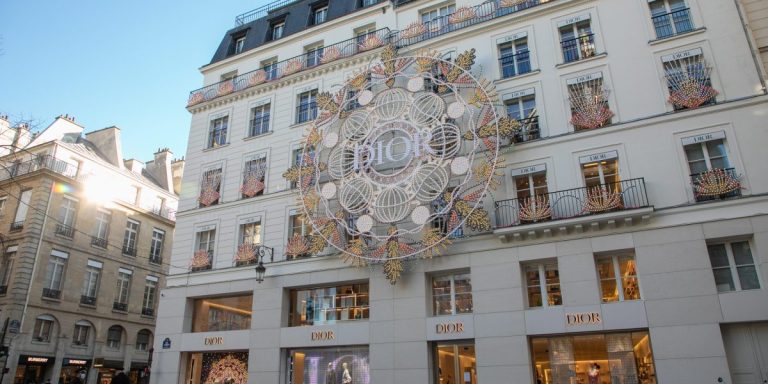Although it’s known for its bags, perfumes and shiny clothing, the Bernard Arnault-owned company also wants its skin on the line when it comes to entire shopping districts around the world.
Whether it’s historic landmarks like Fifth Avenue in New York and the Champs-Élysées in Paris, or a new warehouse-turned-store experience like in Miami’s Design District, the French conglomerate has real estate investments across the board, either directly or through its private equity arm. , L Catterton.
The goal? To ensure it can maintain its presence where people spend the most. LVMH’s investments in real estate are on the rise again: in 2023, the owner of Christian Dior set a new record for its real estate investments, reaching approximately 2.45 billion euros ($2.62 billion).
“All roads lead to real estate,” said Michael Burke, president of the LVMH Fashion group. Wall Street Journaladding that the most valuable luxury company is creating its own city through its controlled properties.
In Miami, where LVMH has pumped money into the Design District via L Catterton, the French company’s influence is unlike any other, whether it’s the neighborhood’s tenants or even the artwork local.
What most of these shopping areas have in common is that LVMH’s brands, from Tiffany’s to Louis Vuitton, are located side by side with its luxury sector competitors. That’s the point, Burke said.
“If we don’t have competitors, we won’t have a new city,” Burke said. “We’re taking something that doesn’t exist and when we’re done, a city center has been created with its residential, commercial and cultural aspects.”
Fashion companies have been behind other major real estate purchases in recent times. Just take Gucci owner Kering, he just shelled out 1.3 billion euros ($1.4 billion) for a new store location in Milan, where LVMH’s Italian coffee brand Cova is also located. The company also earlier acquired a property in New York worth $963 million. This year. LVMH was in talks with buying another prime property in New York, for which she is fighting against other luxury houses like Chanel.
Luxury companies are facing a tough time as people cut back on spending amid the COVID-19 boom. Still, the stores were empty, and since then, the road to getting them back has been slow.
Today, there is finally light at the end of the tunnel, which has prompted luxury giants to focus on in-person shopping experiences. Data on Europe’s 16 luxury streets revealed an almost complete recovery in average rent, from the middle of last yearaccording to Savills.
“Brands want to establish themselves in city centers to improve their visibility among a larger number of customers, taking advantage of the strong recovery in footfall on Europe’s main shopping streets,” Larry Brennan, head of the European retail agency at Savills, said in a note in November.
The desire to reach more customers by being on the most famous and popular streets in the world is undoubtedly part of the reason luxury brands buy properties, but it is also just more economical be their own landlord, as rents can be astronomical in prime shopping areas.
“We are trying to secure and purchase the best possible locations for our businesses,” Arnault said during an earnings conference call in January.

